A few weeks ago, I had the extreme pleasure of spending a day in the beautiful coastal area of Cinque Terre, Italy. If you’re not familiar, Cinque Terre is, just as the name implies, five lands, or villages, that line the Italian Riviera. Most of the villages are not accessible, or not easily-accessible, by car, and there are walking trails that you can take to hike through all five. As I reflected on the challenges of the hike we took, I couldn’t help but relate them to some of the change challenges I see in organizations.
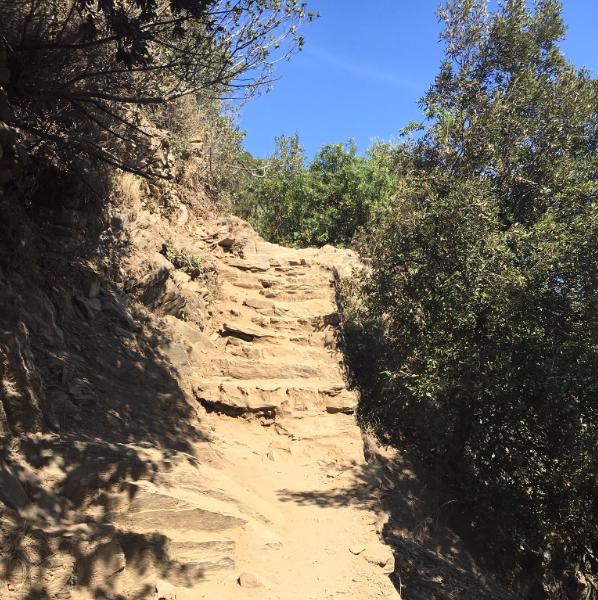
Uneven stairs on the trail
My mother and I hiked what was listed as a 2 hour, 3.5 km hike, from Monterosso to Vernazza. Now, let me preface this by saying that my mother is 73 years old, it was 36 degrees, and, while the path is marked as “average” difficulty, it is full of steep, uneven stairs up and down, many narrow paths without a guardrail, and not a lot of shade at midday, when we hiked. It was bloody difficult.
When we started out, we had been going up the rugged stairs for about 30-40 minutes when a family passed us. They said “it’s at least two and a half hours more to Vernazza, and there’s no water on the way.” They had turned back, worried they wouldn’t make it.
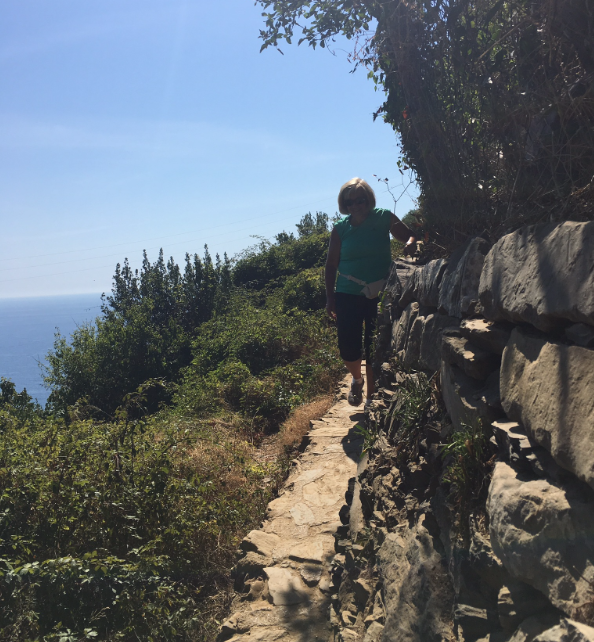
My mom on the trail
I looked at my mom. Although she is quite fit and healthy, she was struggling with the rocky, pitted steps and uphill climb. I said, “if we’re going to turn back, we need to do it now before we start going down and have to go up to get out of here!” She dug in and said we were not turning back. She was determined.
We trekked along the mountainous path, catching beautiful glimpses of Monterosso behind us.
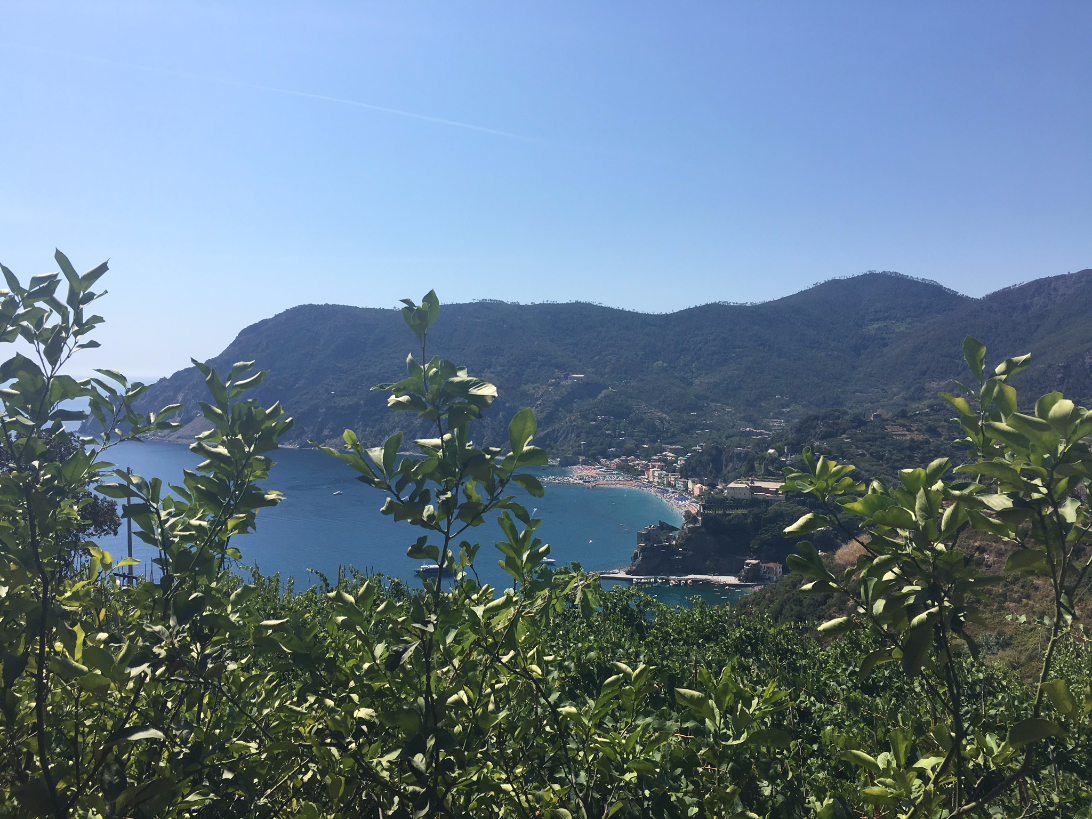
Looking back at Monterosso… the wine was good there…
The hike was beautiful. The water below was crystal blue, with sunlight bouncing off waves, and you could clearly see colourful rocks below the surface. Lemon fields and olive trees surrounded us, and the sun shone hotly on us as we walked. We took frequent breaks and saw many people several times as we took turns passing and slowing on the trail.
At one point, an enterprising man had cut a hole in a fence and was selling freshly squeezed lemonade from his own lemon fields. It was the best lemonade I’ve ever had.
As we hiked on, we lost sight of Monterosso behind us, and time stretched out. We were running out of water – I had not begun drinking my bottle, wanting to make sure I had lots for my mom, and I was starting to feel parched. We didn’t know how far we had to go, and we had no idea what Vernazza would be like. At times, our discussion turned to how nice it would be to have stayed in Monterosso and we could be drinking wine or enjoying gelato right now.
I kept pointing out how beautiful the mountains and water were, and saying, “we must be almost there” when we were around the two hour mark. My mother was increasingly skeptical and feeling discouraged, but was pushing on.
Finally, we caught our first glimpse of Vernazza. It was absolutely picturesque, with colourful buildings, a little beach area, and tiny laneways filled with shops and restaurants.
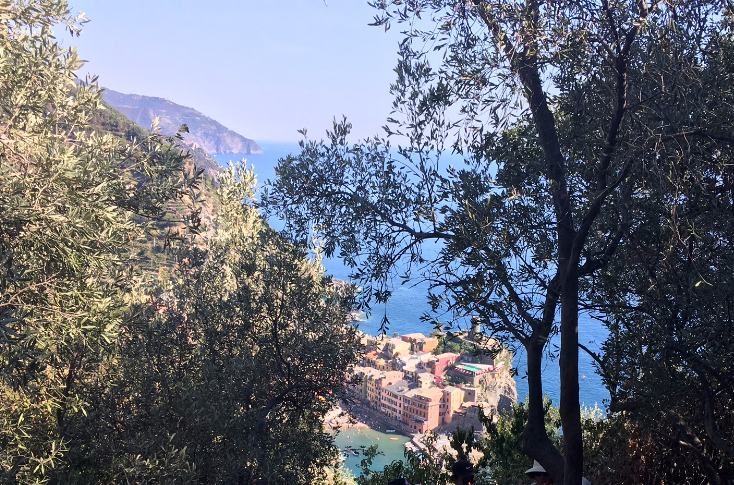
A glimpse of Vernazza at last!
The sight of this beautiful village renewed our strength, and as it became larger in our view, I was feeling energetic and excited. When we arrived, Vernazza did not disappoint. There was delicious, fresh gelato, fun people-watching and lots of little shops and restaurants to enjoy.
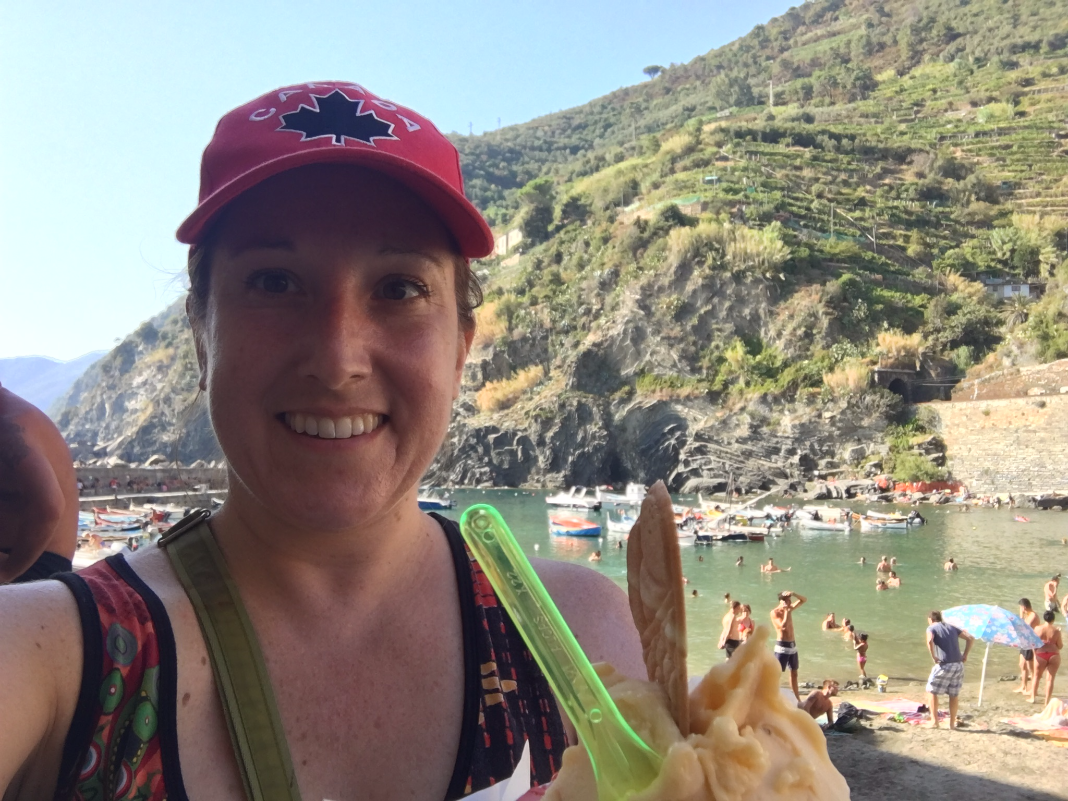
Enjoying gelato in Vernazza
This gruelling hike was my personal favourite part of my trip, which had included a week in London, 3 days in Paris, and 5 days in Florence. I loved the adventure, being out in the mountains and fresh air, the beautiful views and seeing the grit my mom showed in persevering through a difficult hike. But now that I know how beautiful Vernazza is, if I were to do the hike over, I’d also find it much easier. In fact, the next time I’m in Europe, I’d love to go back and hike through all 5 villages!
This brings me to Leading Change.
Leaders are often pushing through change, whether it is to processes, strategy, mergers or acquisitions, or workplace culture. They have reasons for the change and no doubt, they are usually good reasons. We often spend a lot of time communicating the reason for the change but we don’t spend enough time on the vision for the future.
If someone could have painted the picture for me of colourful Vernazza and how it would look from our mountain vantage point as we rounded that turn, how the gelato would taste when we arrived, the sense of accomplishment I would feel upon completing the hike, the trudging would have been less of a focus. I would have been able to imagine where I was going.
Leaders need to paint a picture of the future, using imagery and describing in relatable ways how it will feel once the changes are made, or once you’ve arrived at your destination. The what and why are great, but the emotional connection to change is important when you’re forcing people on a hike they may not have chosen themselves.
The other thing that often lacks in our change communication is what this means to me, and how it will be along the way, bumps and all. I expected a challenging hike, because I did some reading before going to Cinque Terre, and I told my mom it would be up and down because it was mountainous, but I didn’t really know what it would be like. If I had known that the first half hour would be completely uphill, on steps built with stone that were uneven, narrow, and often without guardrails, I would have prepared myself and my mom for that initial challenge. If I had known that about a halfway along, there would be a chance for some lemonade, I would have had something to look forward to, and a marker for the halfway point. If I had known the number of up and down hill sections, I could have been counting down, seeing how far we’ve come.
As leaders, we need to be strategic and we also need to get down to nuts and bolts. It’s great to say “we’re integrating this new technology into our product, and it will help us to serve our clients and make us a leader in the industry,” but it is important to get into the details of what that means to various teams. Work with your leaders at other levels to determine what the integration means. How will customer service support the new technology? When will training take place? What will this mean to your current product development team? should they be working on developing new skills? When will the steps of change take place? How can they find out more? There are an infinite number of questions people will have, and when they don’t have the answers (multiple times – not just once at a town hall or in an email!), they will fill in the blanks. What they fill in usually is worse than the actual state.
Finally, it is important to keep looking around as you go through change! I loved my hike because, even when it was difficult, I took the opportunity to enjoy the journey, looking at the beauty around me. I also kept watching for markers to ensure we were on track. Change is not static. We need to stop doing post-mortems and do “peri” mortems, regularly checking where we are, where our people are, what we’re learning so far, and if we’re still on the right track. And of course, especially when the pushing of change is difficult, practice gratitude and find happiness in what you’ve done so far and the glimmers of positive change happening.
If you have the opportunity to hike in Cinque Terre, I highly recommend it! If my 73 year old mother can do one of the most difficult portions of the hike, you can too. Pack water, enjoy the journey, and share what you learned!

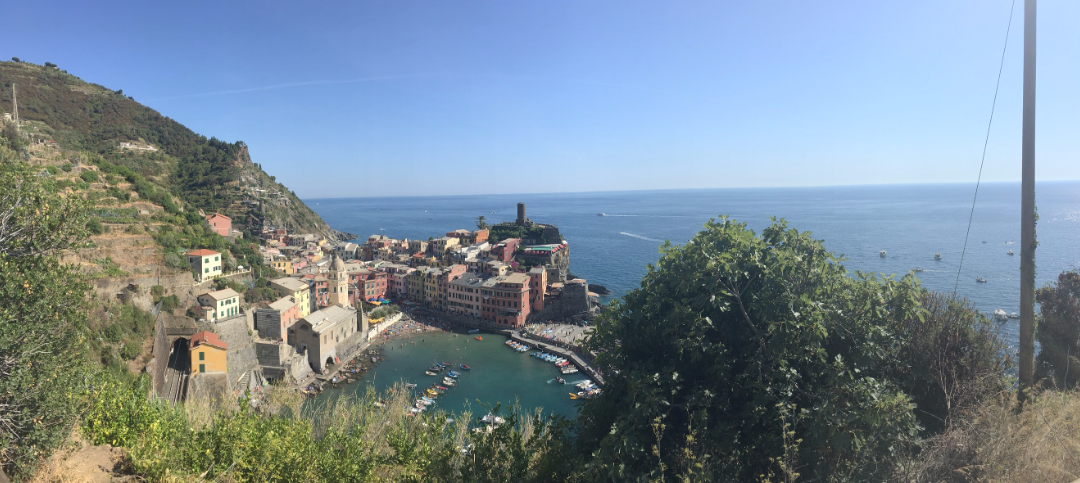
Recent Comments